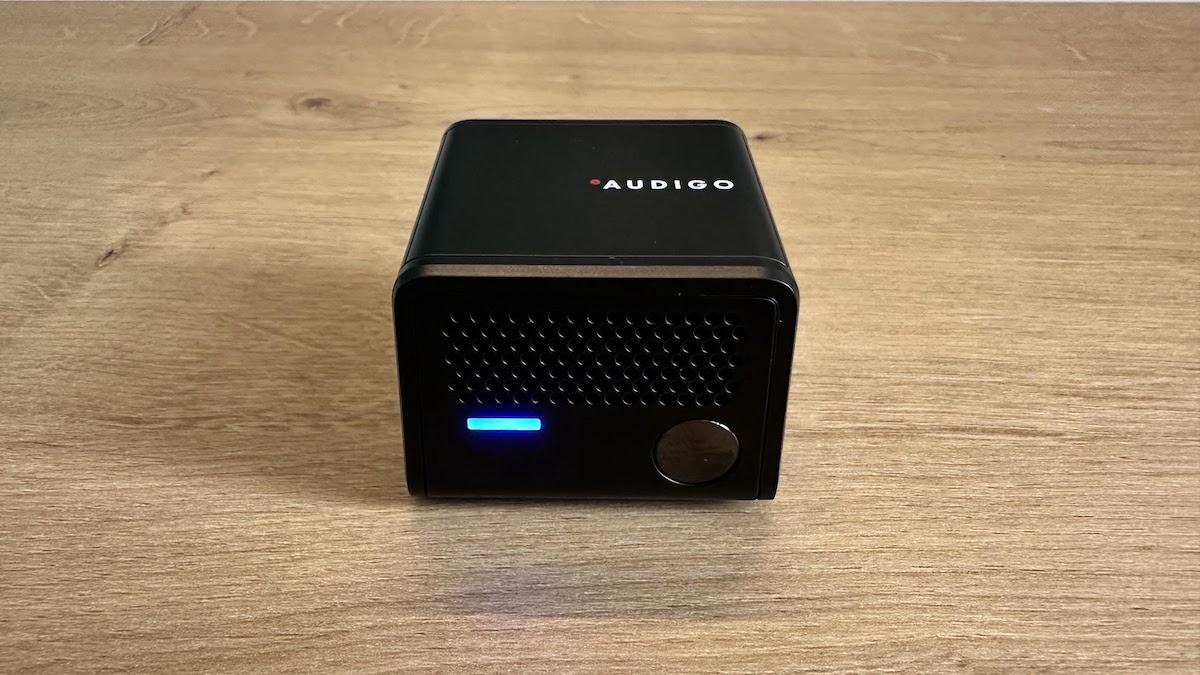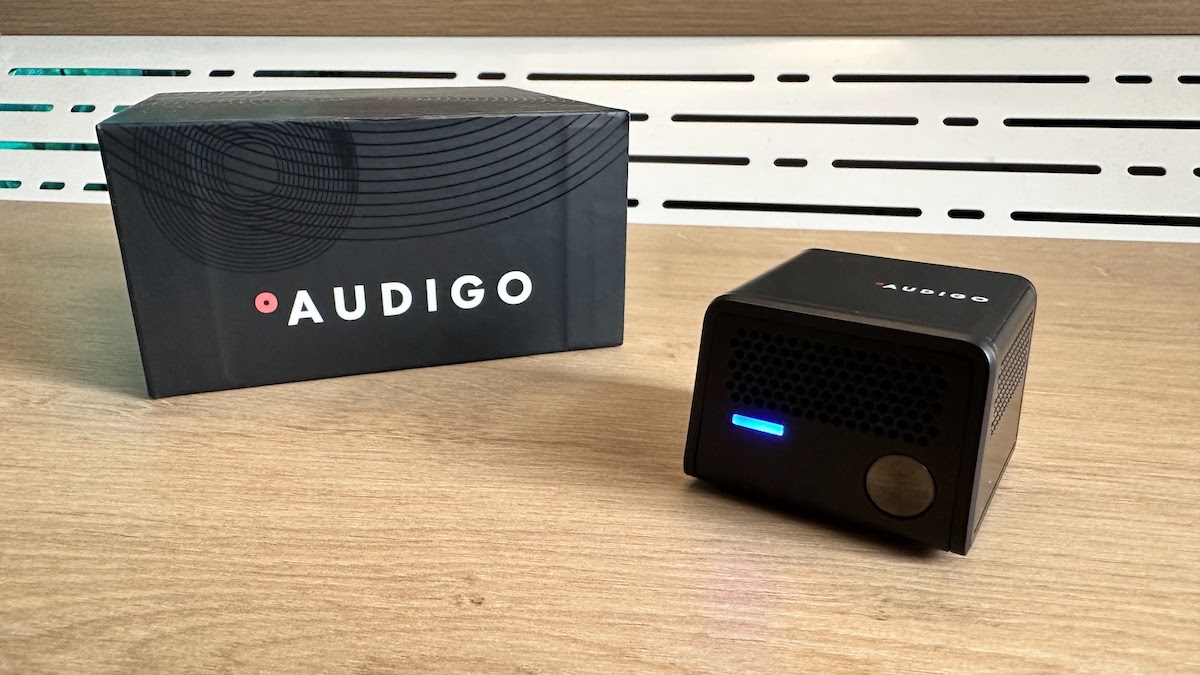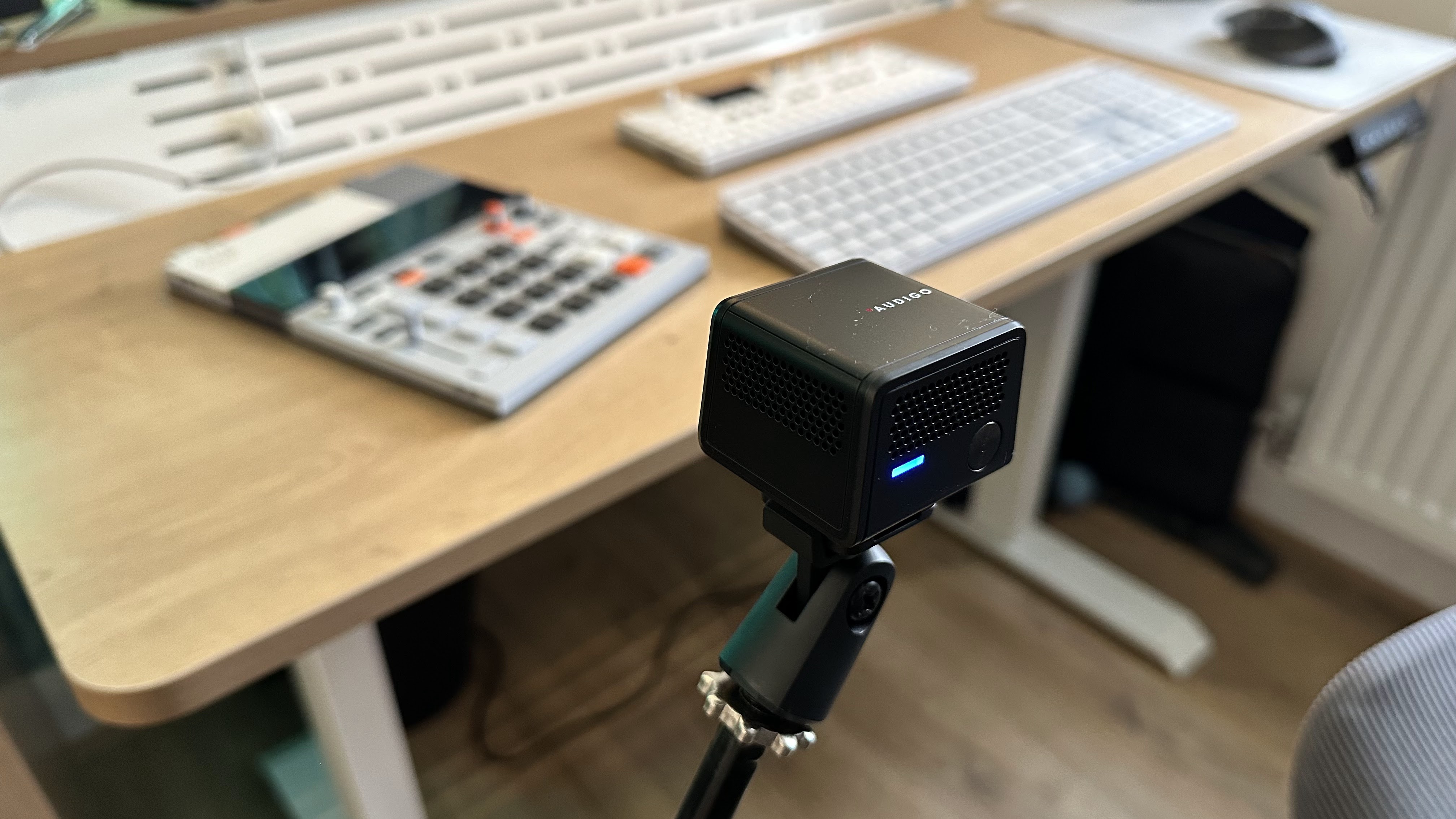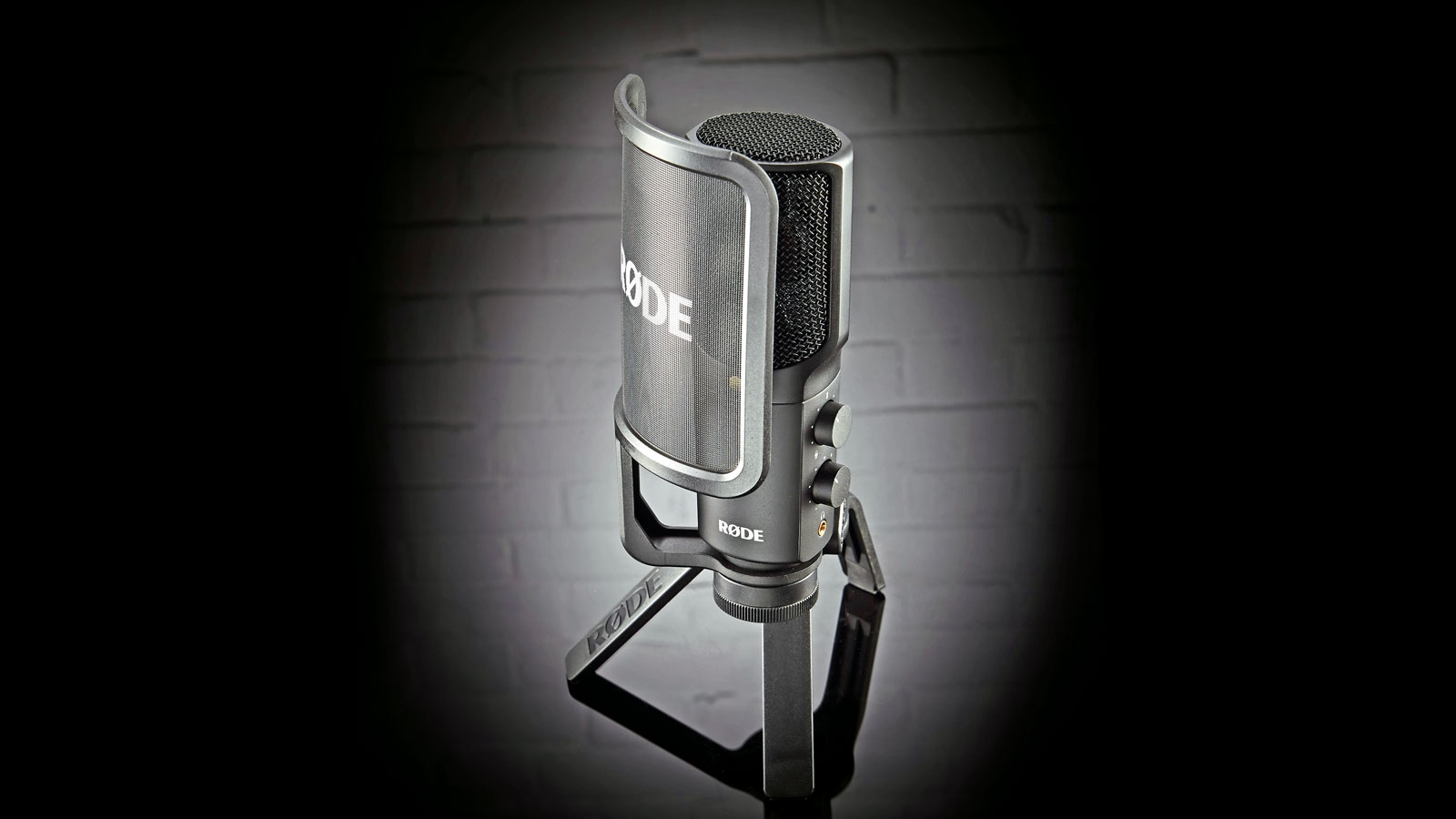
Audigo review: What is it?
At its core, Audigo is a pocket-sized stereo condenser microphone that wirelessly connects to a dedicated iOS app, transforming your iPhone into a portable recording studio. The app houses both a video and audio recorder, ensuring both work in perfect harmony, meaning you can feasibly set up a mic close to your sound source - your acoustic guitar’s soundhole, for example - and then locate your phone further away to get the perfect shot.

Type: Condenser
Sample rate: 48kHz
Bit depth: 24-bit
Frequency range: 20Hz to 20kHz
Polar pattern: Cardioid
Buy from Audigo
The microphone itself, which is roughly the size of a couple of matchboxes, is equipped with two mid-side high-sensitivity condenser capsules. These capture audio signals and store them directly onto its internal memory. Once the recording is complete, the microphone wirelessly transfers the audio data to the Audigo iOS app, where you can access, edit, and share your creations.
This functionality is then taken a step further within the app, where you can adjust the sound with EQ and reverb controls. If you’re using more than one mic - up to four is possible - you can even then mix the volume and panning of the recorded sounds to speed up the process of exporting a finished, polished video. The goal is to make it easier to record nicely framed, great-sounding clips using just your iPhone and the Audigo mic. It’s a novel premise, unlike pretty much anything else on the market, but does it live up to its promise?
Audigo review: Performance & verdict

The wireless Audigo microphone - the physical half of the value proposition - is a small cuboid unit. It looks pretty robust, and has a nice weight to it, with a small rubber foot on the base ensuring it won’t slide off a tabletop easily. The mic can be connected to a regular mic stand thanks to an included magnetic attachment, which means the mic can be placed in a more conventional way for recording certain instruments. A 6-hour battery life and 32GB internal storage facility also means there’s plenty of time available for capturing recordings.

Connectivity between the mic and the app is seamless, featuring both Wi-Fi and Bluetooth 5.2, and we never had any problems with signal drop-outs in our testing period. What’s impressive with Audigo, however, is that even if there were problems and the app and mic lost connection, the audio recordings are stored directly onto the mic itself. This means that when you connect it up physically using the USB-C port, you will still be able to transfer the finished audio files over to your computer.
One point to mention is that you can only record video using the app’s built-in video functionality, and are limited somewhat to the settings it offers. And while 24/30fps footage in 4K will be enough for most people, it does mean you can’t access some of the different options native to your iPhone’s camera, like bokeh backgrounds and higher frame rates. This might not be a dealbreaker but it’s worth keeping in mind.
On a more positive note, the ability to use up to four Audigo mics concurrently is pretty spectacular and a real ‘wow’ feature. You could, hypothetically, place mics in front of a drum kit, bass amp, acoustic guitar and singer, and then set up your iPhone on the other side of the room with everyone in frame. From there, the app will record four separate streams of audio, which can then be mixed, panned and have polishing effects added to them in real-time, all the while remaining totally synced to the video itself. Truly impressive stuff, and quite unlike anything else that’s on the market at the moment without resorting to higher-spec dedicated video equipment.
As someone who’s done a lot of videography, both professionally and in the capacity of being the one band member with a functioning camera, I’ve got lots of experience recording rehearsal sessions. Usually this involves setting up a dedicated camera, and then a separate dedicated audio recorder - in my case a trusty Zoom H6 - with multiple mics and the seemingly never-ending mess of XLR cables that goes along with that.

Add to that the setup time, checking multiple mic levels, and then the (sometimes) frustrating job of syncing up the various audio sources - and then naturally having to pack everything up afterwards - and you can see why the Audigo package excites me. You simply turn on the mics, open the app and everything connects together itself. Press record and you’re good to go.
In solo testing, the process largely lived up to the premise. Sure enough, I was able to set up a couple of Audigo mics - one at the soundhole of an acoustic guitar and then another set around 12” back. The phone itself was set on a tripod, around three metres away, giving me a huge amount of freedom over the framing and scene-setting that you wouldn’t necessarily get if you were relying on the phone’s mic.
From there, I simply hit record on the Audigo app and began playing. The results (of the video, not my playing…) were superb. Within seconds of stopping recording, the app showed both audio streams from the mics, in perfect sync with the video recording. This, in itself, would have been enough but the Audigo app goes a step or two further by allowing you to change the volume levels, panning, stereo width and other settings like adding reverb using a nicely visual, tactile grid system. Any changes you make are instantly reflected in the recording, making it easy to test out different options until you find something you like. Crucially, you don’t need to be an expert videographer or sound engineer to make any of this happen. It’s so simple.
When I’d finished mixing, I was given the option to export either the video in full, with audio, ready for upload to YouTube and the usual social channels, or just the audio, or a multitrack zip file containing each individual element so I could drag them to an Adobe Premiere Pro project for further editing and polish. Very slick and problem-free.
As is the norm these days, Audigo does offer up a subscription tier which unlocks cloud storage and a compression effect, although it’s keen to point out that the core functionality of the app and mic are available to anyone, regardless of subscription status. There’s also bad news for Android users, as Audigo is certified for use with Apple devices only.
So who is Audigo for, and what problem does it solve? Fundamentally, the combination of Audigo, its app and your iPhone come together to provide an easy to use, hugely portable and genuinely useful videography package. We liked the way the product is being aimed specifically at musicians, rather than streamers or gamers, and can easily see bands, solo artists and other performers finding a place for Audigo in their regular recording line-ups. Capturing rehearsals and live performances is a vital tool for any artist, and with Audigo it just got a whole lot easier.
Audigo review: Hands-on demos
Sunday Mornings HQ
Patrick Breen
EllenPlaysBass
Audigo review: Specification
- Type: Condenser
- Sample rate: 48kHz
- Bit depth: 24-bit
- Frequency range: 20Hz to 20kHz
- Polar pattern: Cardioid
- Connectivity: USB-C & headphone out
- Contact: Audigo







